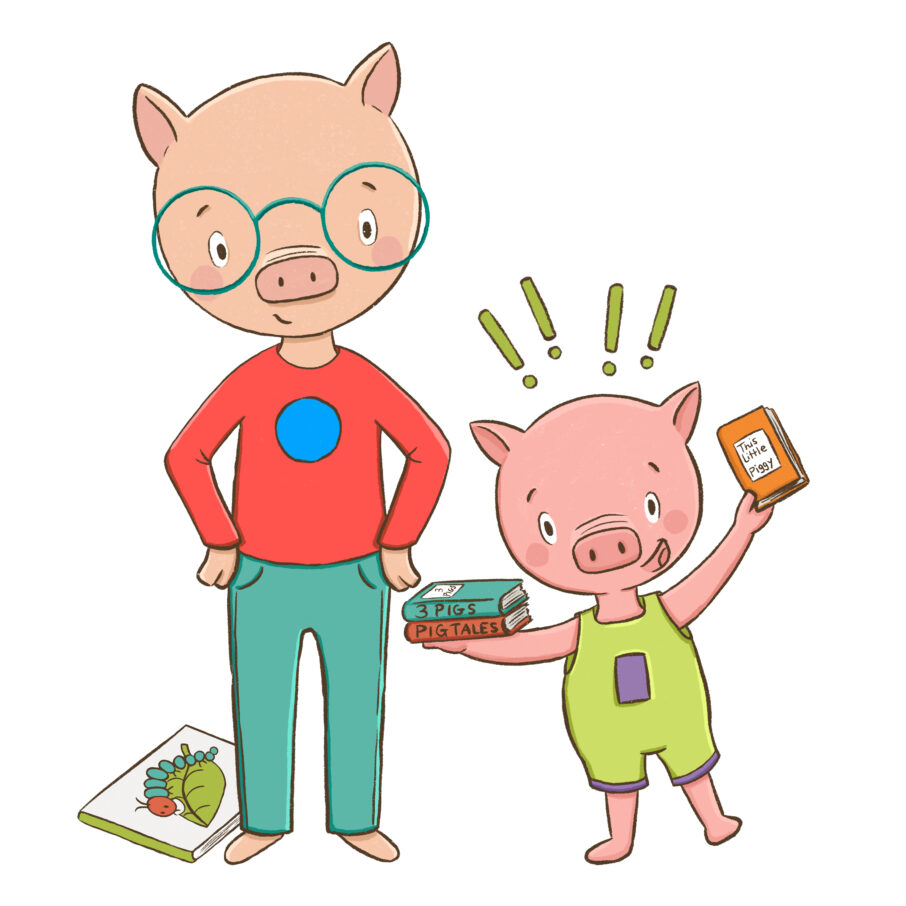
Inspire
Reading Ritual
Routines vs. Rituals?
A routine is when you repeat an activity regularly without putting much thought into it. A ritual is when you infuse a repeated activity with purpose and meaning. For example, teaching your child an alphabet letter that letter holds no significance for them won't be as effective as teaching them the first letter of their name. Similarly, creating a reading routine that isn't meaningful is akin to assigning them a daily chore.
Rituals are intentional.
Let's say you want to create a ritual for yourself. You know you'd benefit from thirty minutes of peace each morning before the rest of your family wakes up and chaos ensues. There are decisions and actions you have to make in order to turn your desire into a reality. What do you want to accomplish during your alone time? Maybe you'll exercise, write in a journal, or sip coffee while mentally planning your day. What time do you need to wake up? Will you set an alarm on your phone? On your bedside clock? What will you wear? A robe? Workout clothes? Where will you go? The kitchen? The living room? What do you need with you? Coffee? A journal? A yoga mat? Setting your intentions in advance makes starting the ritual easy because you know your why, when, where, what, and how long.
A six-step plan...
Planning meaningful rituals sets them apart from the chores and rote activities that fill up our days. Below is a list of six steps you need to take when designing rituals for you and your child. For our purposes, the examples listed pertain to creating a reading ritual. But the steps can be applied to any ritual you dream up.
Purpose
The first step in designing a ritual is to decide on your purpose. This is your WHY. Are you reading with your child so they'll feel more confident in school? Do you want to teach your child to read as an escape from daily stresses? Do you want to help your child build their vocabulary? Do you want them to communicate verbally? It's important not to skip this step. Attaching an intention or purpose to the ritual increases the likelihood that you'll follow through.
Action
Next, you need to make decisions about the series of actions you and your child will take in order to complete the reading ritual. These may be actions like changing into pajamas beforehand, bringing a special toy or blanket to use during the ritual, choosing the two books you'll read, turning on a color-changing lamp, etc. You'll repeat these same actions each day.
Time
Now you need to decide on a time of day for your ritual and how long you'll spend reading. The when is entirely up to you. If you get home late, reading before your child's bedtime may not be possible. Maybe you have ten minutes to read with them each morning instead. The time of day isn't important; consistency is. Choose a time of day that will work for you on repeat.
The amount of time you spend reading is dependent on your child. Their age and personality play a role in this decision. Attention span increases with age. Ten minutes of reading with a three year old may increase to thirty minutes of reading with a six year old. Interest level also impacts how much time your child will stay engaged. Do they like dinosaurs? Fairies? Farm animals? Friendship stories? Choose books based on their current interests.
Place
You've decided on your WHY. You've planned what actions you and your child will take, and what time and how long you'll read each day. But where will you read? Choose someplace comfortable and relatively peaceful.
If you live in a small space, a cozy reading nook in the corner of a bedroom is preferable to the kitchen table or a chair near a blaring television. The place where your child sleeps is also a good choice. Wherever you decide to read, try to make it cozy and special. Get creative! Pile up cushions to sit on. String up fairy lights. Add a book shelf or book basket. Create an audience for the stories with stuffed animals. Draw pictures of favorite book characters and hang them on a nearby wall.
Start
Ready, set, go! You and your child have settled into your reading nook with your books and special objects. How will you begin?
Picture walks are a fun way to start. It's a way to get children talking about books using their own language. Look at the book cover. Ask what they think the book is going to be about. Open the book and ask questions or comment on what's happening in the illustrations. Can they guess who the main character is? Can they figure out what the story problem is? Can they tell what's happening on each page? Skip the final few pages when reading a new book so there's an element of surprise.
Once your child has made their predictions, it's time to read. Pause after reading each page. If they want to ask questions as you read, let them. You can ask questions, too. Ask what they think will happen next. Ask what they'd do if they were in the character's place. Ask how a story event makes them feel. Tell them how it makes you feel. Ask if the story reminds them of another book you've read or something that happened in real life. Make connections whenever possible.
End
Once the story is over, it's time for reflection. Remind your child of the predictions they made during the picture walk. Did their predictions come true? Ask if they would read the book again. Why or why not? Ask them what their favorite part was and why. Ask if they thought the ending was fair. How might it have ended differently? These conversations will give you and your child valuable insights into the way you both think and feel.
 Congratulations!
Congratulations!
You and your child have a meaningful reading ritual you can engage in for years to come. The books you read will change as your child evolves; from picture books, to easy readers, to early chapter books. But the ritual you share will be a constant.


